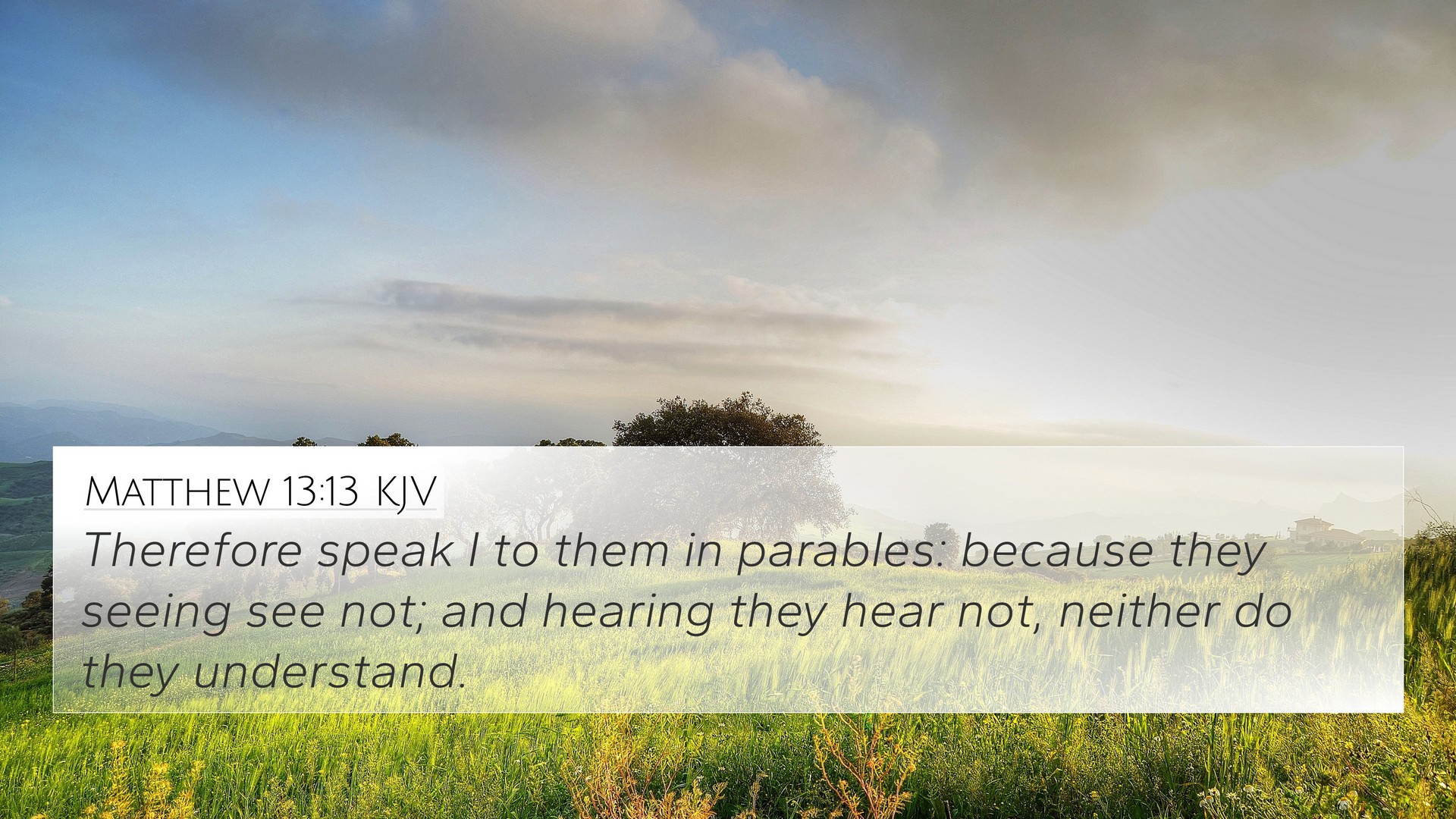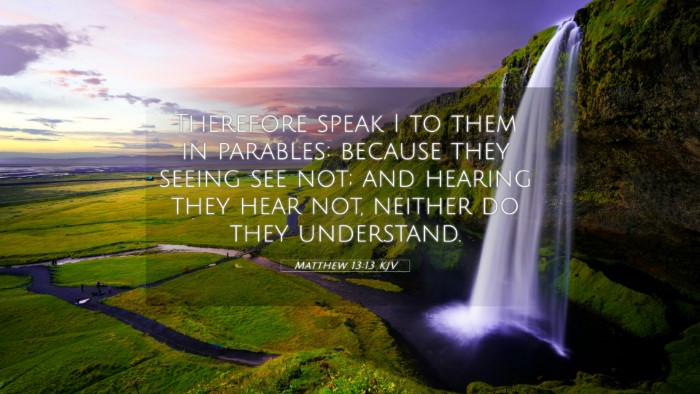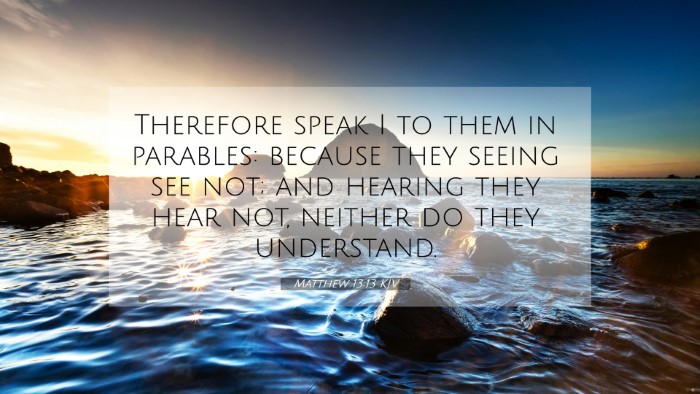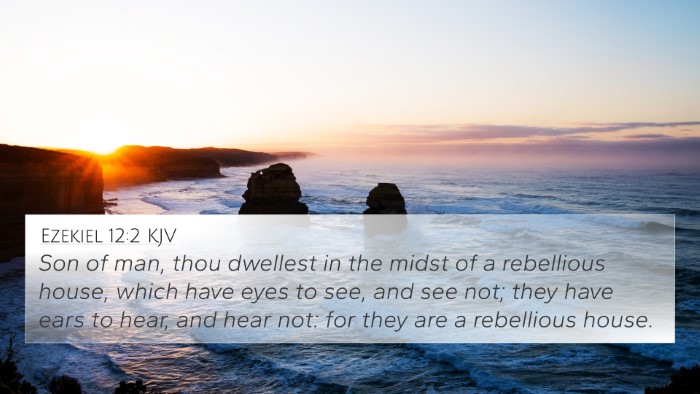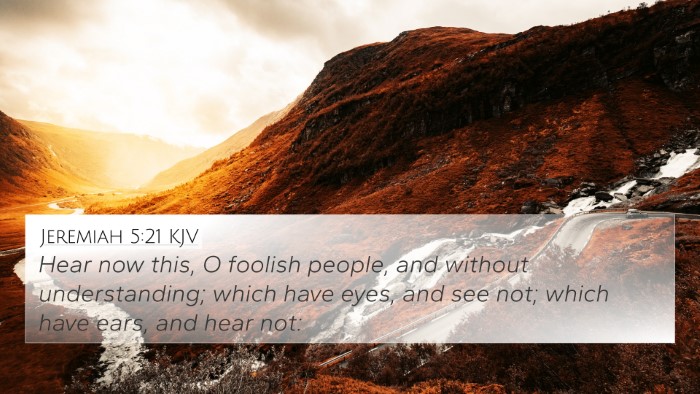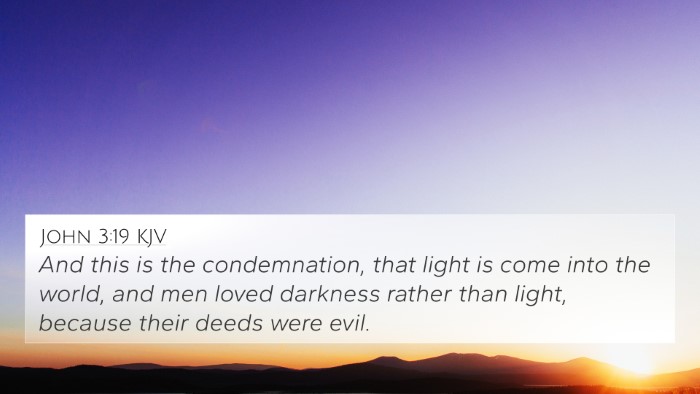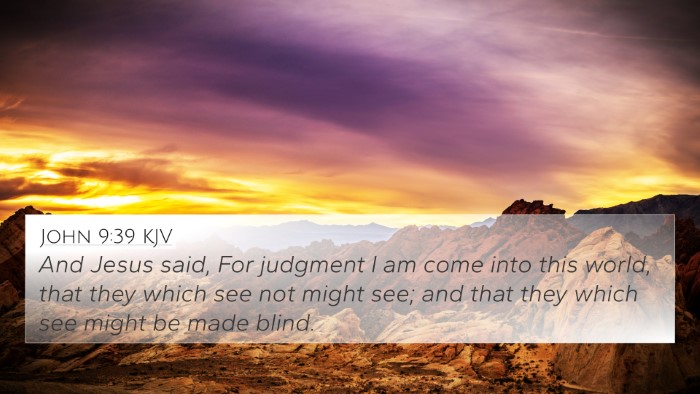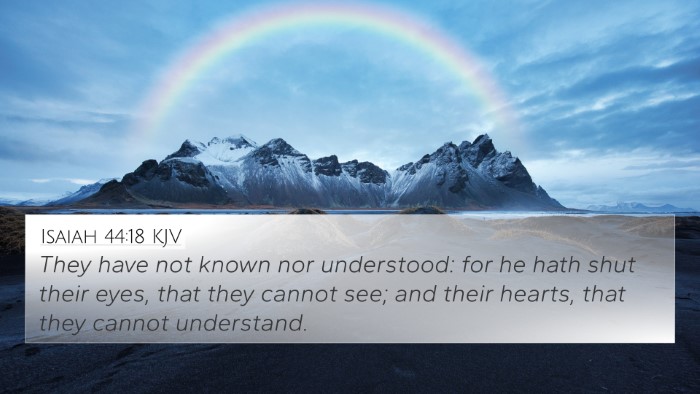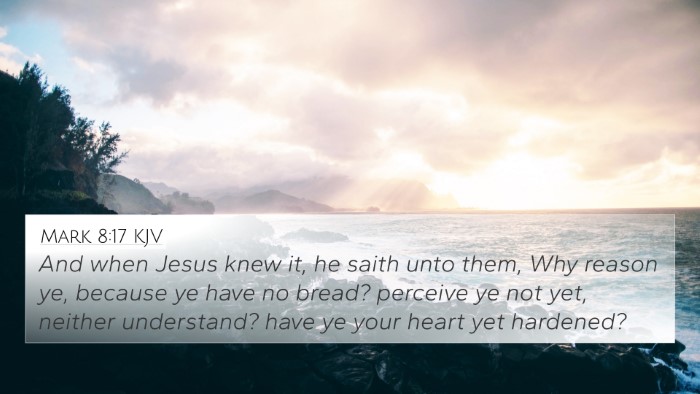Understanding Matthew 13:13
Matthew 13:13 states, "Therefore I speak to them in parables: because they seeing see not; and hearing they hear not, neither do they understand." This verse encapsulates the principle of Jesus' teaching method and highlights the spiritual blindness of many who encountered His words.
The insights from prominent public domain commentators like Matthew Henry, Albert Barnes, and Adam Clarke reveal a deeper understanding of this verse.
Commentary Insights
-
Matthew Henry's Commentary: Henry emphasizes that parables were used by Jesus to both reveal and conceal truth. For those open to His message, the parables illuminate spiritual realities, while for others, they remain obfuscated. This fulfills the prophecy of Isaiah regarding the people’s hard-heartedness and illustrates divine judgment through the withholding of understanding.
-
Albert Barnes' Notes: Barnes highlights that the use of parables serves specific purposes, such as engaging the listeners and compelling them to seek deeper understanding. He notes that the failure to see and hear signifies moral and spiritual incapacity, rather than a mere lack of intellectual comprehension.
-
Adam Clarke's Commentary: Clarke provides additional context by pointing out that the use of parables serves to filter the audience. The sincere disciples gain insights that are precious, while those indifferent or hostile remain in spiritual blindness.
Bible Verse Cross-References
- Isaiah 6:9-10 - God speaks of the people's hearts being dulled.
- Matthew 13:14 - Directly quotes Isaiah, reinforcing the spiritual blindness theme.
- Mark 4:12 - Affirms that hearing they may hear, but not understand.
- Luke 8:10 - Jesus shares that the mysteries of the kingdom are given to His disciples.
- John 12:40 - God has blinded their eyes and hardened their hearts.
- Romans 11:8 - The principle of a spirit of slumber on Israel.
- 1 Corinthians 2:14 - The natural man does not receive the things of the Spirit of God.
Thematic Connections and Interpretations
In interpreting Matthew 13:13, it is essential to understand the broader themes of spiritual perception and revelation throughout the scripture. The connections between Bible verses related to blindness—both physical and spiritual—draw a cohesive line through the Old and New Testaments.
This verse invites a comparative Bible verse analysis with references like John 8:43-44, where Jesus addresses the inability of the Jewish leaders to understand His message. Another example is found in 2 Corinthians 4:4, where Paul discusses the god of this world blinding the minds of believers.
Tools for Bible Cross-Referencing
For those seeking to deepen their understanding through cross-referenced themes in the Bible, resources like a Bible concordance and cross-reference Bible study guides are invaluable.
These tools allow readers to identify connections between Bible verses, facilitating a deeper comprehension of the scriptural narrative.
- Bible cross-reference system helps in contextual analysis.
- Bible reference resources support sermon preparation.
- Comprehensive Bible cross-reference materials provide extensive insights.
Conclusion
Matthew 13:13 encourages believers to engage deeply with scripture, seeking to bridge gaps of understanding through inter-Biblical dialogue. To fully grasp its implications, one must be aware of the wider narrative arc and how various passages connect in the teachings of Christ.
By employing tools for Bible cross-referencing, readers can uncover the rich tapestry of connections between Bible verses, enhancing their study and comprehension of spiritual truths.
